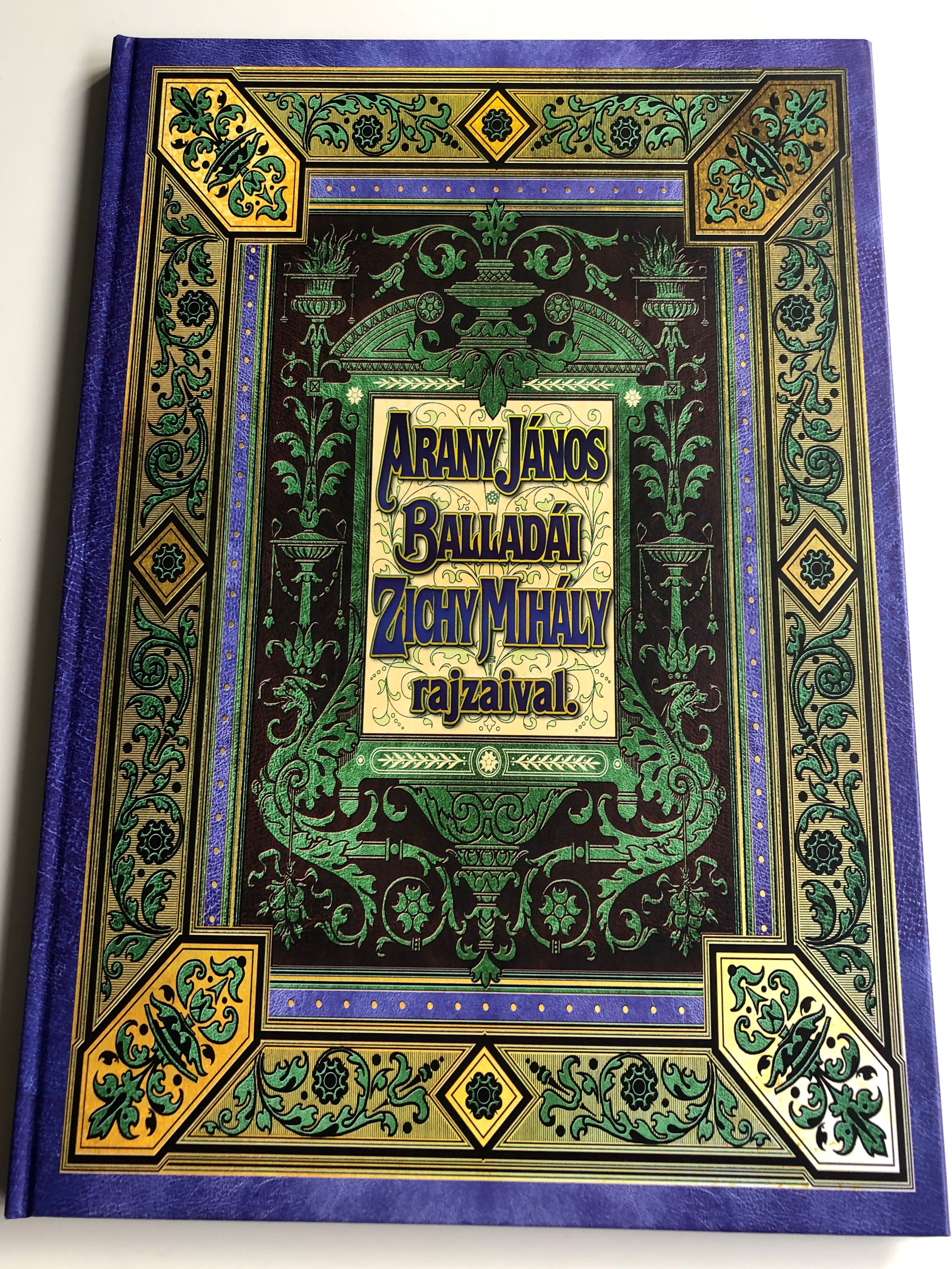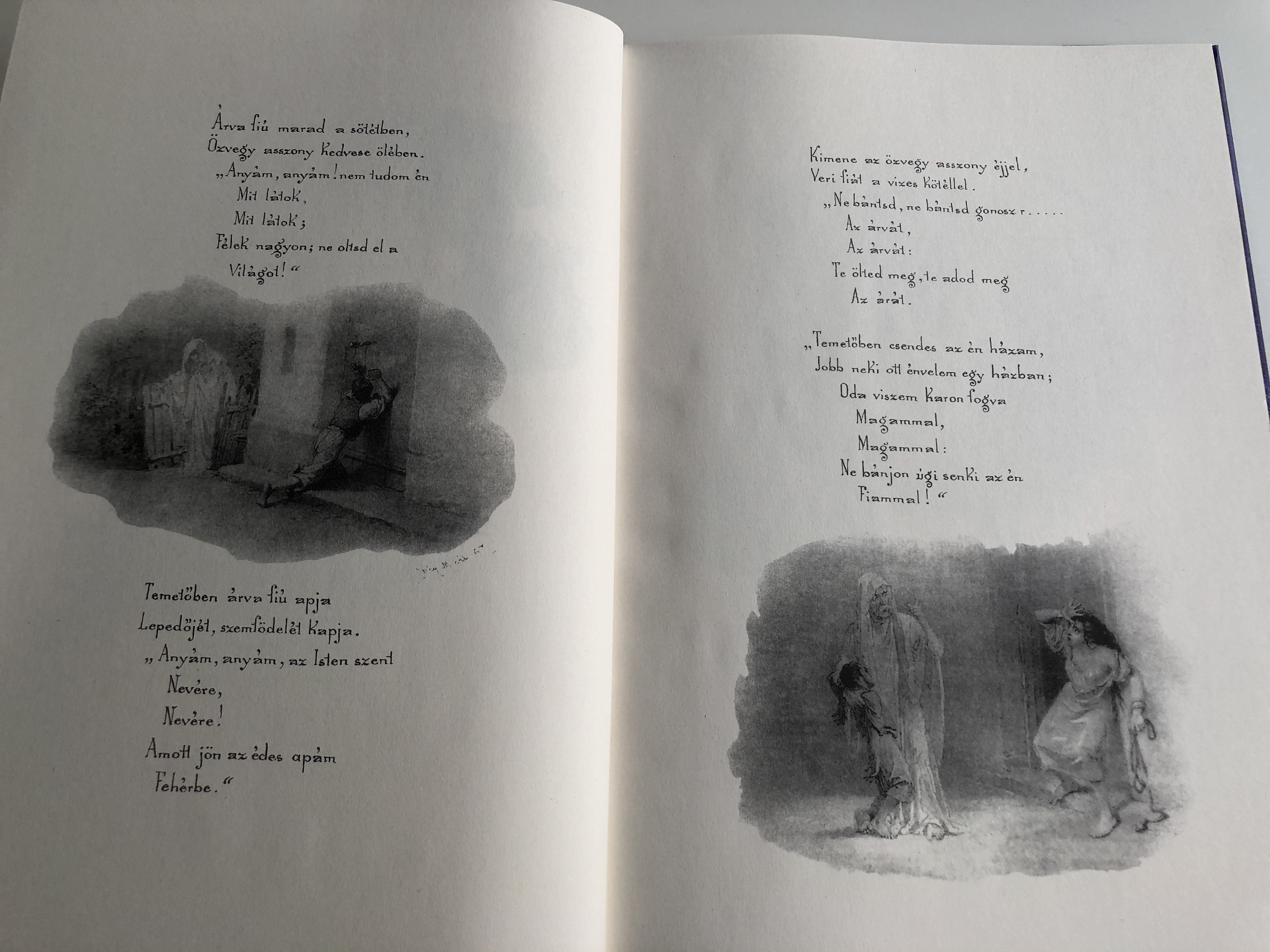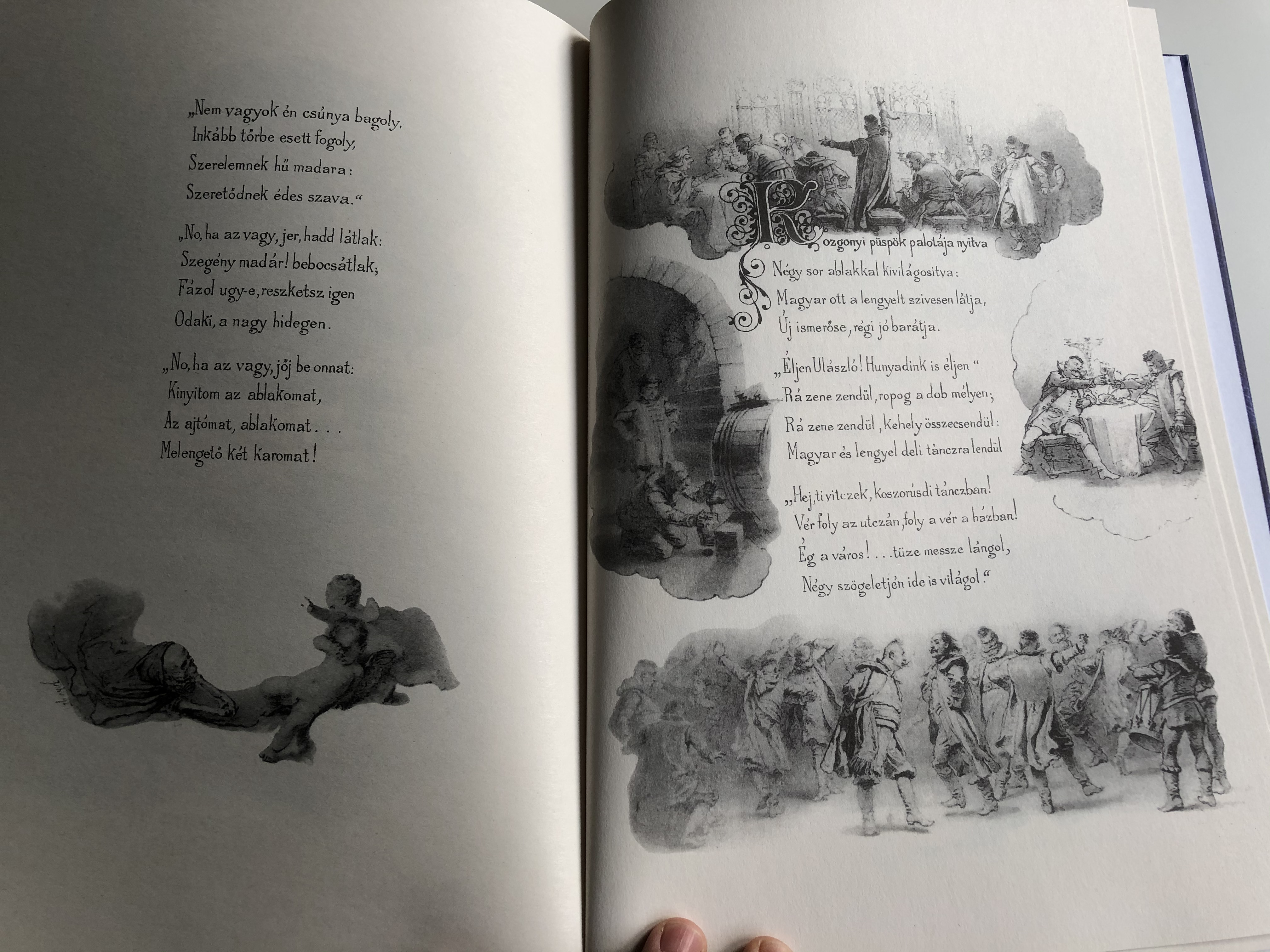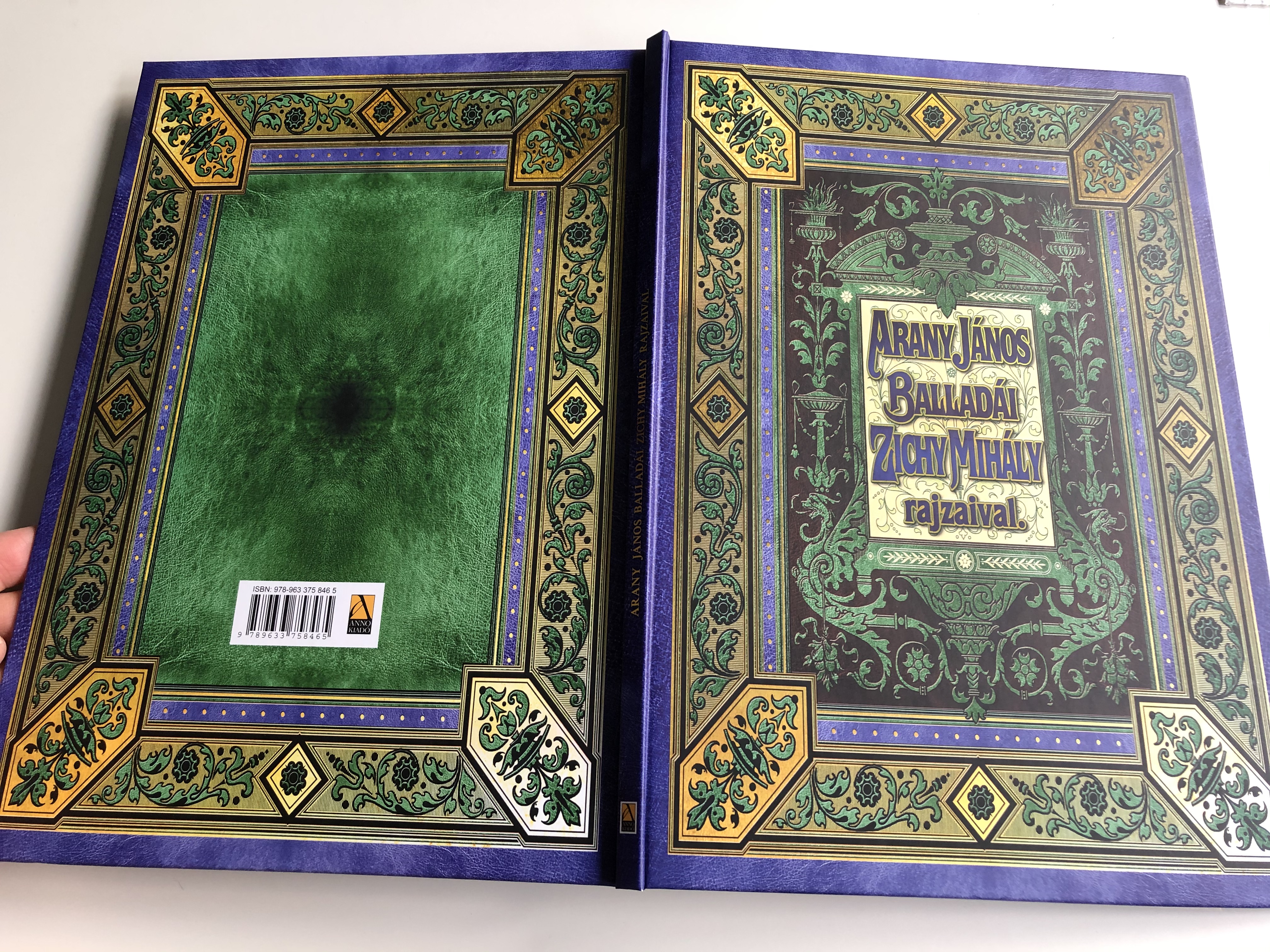Product Overview
Arany János balladái Zichy Mihály rajzaival / Ballads of János Arany with drawings of Mihály Zichy / Facsimile edition of 1896 print / Franklin-társulat - Anno kiadó 2000 / Hardcover
Hardcover 2000
ISBN: 9789633758465 / 978-9633758465
ISBN-10: 9633758467
PAGES: 44
PUBLISHER: Franklin-társulat - Anno kiadó
LANGUAGE: Hungarian / Magyar
Hungarian Description:
Facsimile kiadás. Ez a könyv a Franklin Társulat 1896-os kiadásának változatlan utánnyomása. Fekete-fehér illusztrációkkal.
English Description:
János Arany (Hungarian pronunciation: [ˈjaːnoʃ ˈɒrɒɲ]; archaic English: John Arany; 2 March 1817—22 October 1882) was a Hungarian poet, writer, translator and journalist. He is often said to be the "Shakespeare of ballads" – he wrote more than 102 ballads that have been translated into over 50 languages, as well as the Toldi trilogy, to mention his most famous works.
Arany was elected a member of the Hungarian Academy of Sciences in 1858. He was the secretary-general of the Academy from 1865. Also, he was elected director of the Kisfaludy Society, the greatest literary association of Hungary.
The early death of his daughter, Julianna in 1865 marked the beginning of Arany's hiatus as a poet. He did not write any original pieces until the summer of 1877, when he began working on his poetic cycle entitled Őszikék which is substantially different from his previous works, concerning themes like elderliness, or the imminence of death.
Mihály Zichy (Michael von Zichy; born 15 October 1827 in Zala, Kingdom of Hungary – died 28 February 1906 in St. Petersburg, Russian Empire) was a Hungarian painter and graphic artist.
Mihály Zichy was a significant representative of Hungarian romantic painting. During his law studies in Pest from 1842, he attended Jakab Marastoni's school as well. In Vienna he was Waldmüller's pupil in 1844. "Lifeboat", his first major work, comes from this time. On Waldmüller's recommendation, he became an art teacher in St. Petersburg. He swore allegiance to freedom by painting the portrait of Lajos Batthyány, the first Hungarian prime minister, in 1849. From 1850 onwards, he worked as a retoucher, but he also did pencil drawings, water colours and portraits in oil. His erotic drawings have a particular warm intensity in which both members of the couple seem equal partners. The series on the Gatchina hunting ordered by the Russian tsar raised him to a court artist. He founded a society to support painters in need. "Autodafé" on the horrors of the Spanish inquisition was painted in 1868. He travelled around Europe in 1871, and settled down in Paris in 1874.
He painted "Queen Elisabeth Laying Flowers by the Coffin of Ferenc Deák" to a commission from Treffort. "Drinking Bout of Henry III", his next large-scale picture, came in 1875. "The Victory of the Genius of Destruction" painted for the Paris Exhibition was banned by French authorities because of its daring antimilitarist message. He left Paris in 1881 and returned to St. Petersburg after short stays in Nice, Vienna and his native Zala.
Tartalom / Contents:
| Árva fiú | |
| Rozgonyiné | |
| Vörös Rébék | |
| Szibinyányi Jank | |
| Tengeri hántás | |
| Egri leány |























